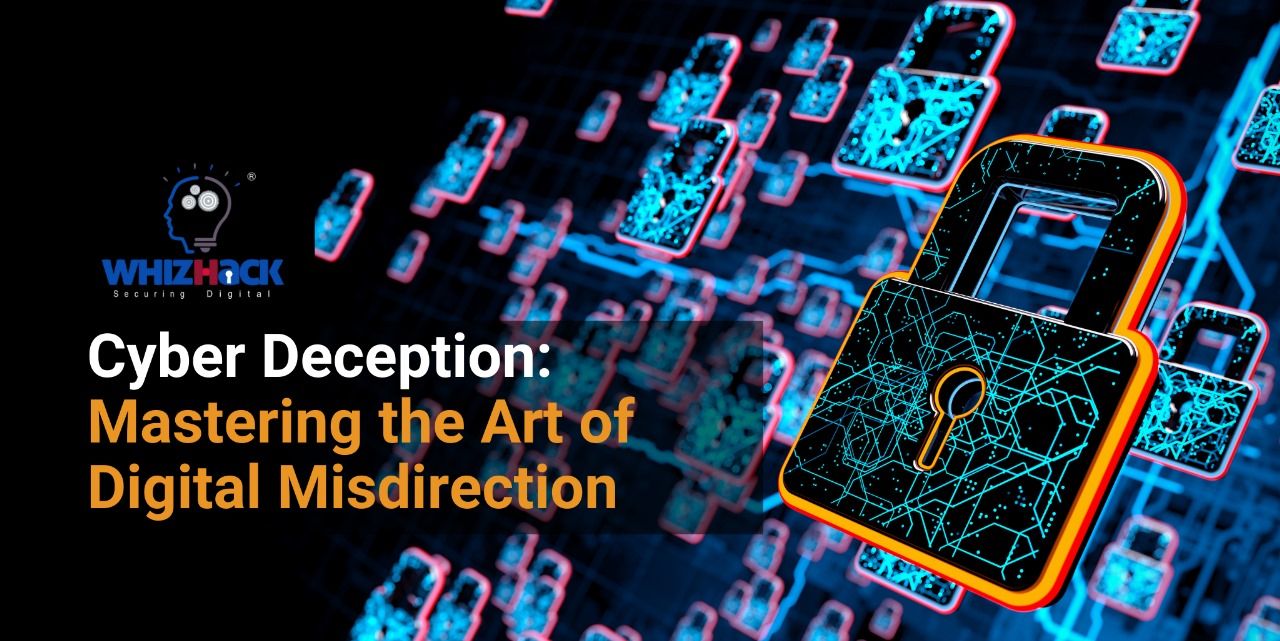As we explore the sophisticated methods used by cybersecurity professionals to outmaneuver adversaries, we connect the dots between foundational security measures and advanced deception tactics. From honeypots to simulated networks, let’s uncover how these strategies are crucial in enhancing our defense mechanisms. This blog post discusses the multiple advantages of using an integrated cybersecurity solution, as well as its effectiveness in combating changing cyber threats.
Continuing Our Journey into Cybersecurity Deception
In our last discussion, we highlighted how deception serves as a proactive strategy to mislead and manage cyber threats. Now, we expand on the types of deception techniques that play pivotal roles in safeguarding digital assets, ensuring our approach not only detects but also disorients potential cyber threats effectively.
Why Deception?
Rising Cybercrime Costs:
Cybercrime continues to be a major global threat, with costs projected to rise dramatically. According to a report by Cybersecurity Ventures, global cybercrime damages are expected to reach $10.5 trillion annually by 2025, up from $3 trillion in 2015. This stark increase underscores the critical need for effective cybersecurity measures.
Effectiveness of Honeypots:
Honeypots, one of the primary tools in deception technology, are significantly more effective at detecting threats early compared to traditional methods. A study from Symantec revealed that honeypots can detect network intrusions up to 60 times faster, providing security teams with valuable time to respond to threats.
Cost-Effectiveness of Deception Strategies:
Deception technologies not only provide superior threat detection but are also cost-effective. They generally require less maintenance and fewer updates once deployed, making them a cost-efficient choice for long-term security investment. New Cyber Research from EMA has recorded a 91% Reduction in Dwell Time for Users of Deception Technology.
Accuracy and Low False Positives:
According to research by Gartner, organizations implementing deception technology have reduced their operational costs by an average of 17% due to decreased need for manual intervention and fewer false positives.
Reliability of Alerts:
In a comparative study, deception technologies demonstrated a false positive rate of less than 2%, significantly lower than the industry average for other security tools, which can be as high as 25%.
Types of Deception Techniques:
1. Honeypots:
Honeypots serve as decoy systems or networks that lure attackers by mimicking legitimate assets. These systems are invaluable in revealing the tactics and techniques of cybercriminals, providing cybersecurity teams with critical data to bolster real asset protection.
2. Honey Tokens:
Strategically placed within an organization’s network, honey tokens act as bait. Whether they are fake credentials, documents, or database entries, their manipulation triggers alerts, providing early warnings of malicious activity.
3. Deceptive Documents:
These are engineered to look like legitimate files but are designed to trap or trace attackers. By embedding these documents with sensors or trackers, they reveal unauthorized access and help in understanding the attackers' intent.
4.Deceptive Networks:
By creating simulated environments that mirror an organization’s infrastructure, deceptive networks confuse attackers, making it challenging to distinguish between real and fake assets. This increases the chances of detecting and mitigating unauthorized access.
5. Honeynet:
A honeynet is a network of honeypots that simulates an entire network environment. This setup is designed to attract more sophisticated threats that might bypass individual honeypots. Honeynets provide insights into how attackers interact with larger network systems, helping organizations understand and defend against multi-point attacks and intrusion strategies.
Benefits of Deception Techniques:
Early Threat Detection: Deception technologies like honeypots and honeynets proactively identify threats by luring attackers into engaging with decoy assets. This early engagement allows security teams to detect malicious activities before they reach critical business systems, thereby preventing potential harm and reducing the attacker's success rate.
Threat Intelligence: Interaction with deception assets provides a wealth of data about attack methods and attacker behavior. This intelligence includes the types of attacks preferred, the level of persistence, and even potentially the origin of the attacks. Armed with this information, organizations can fine-tune their security postures, anticipate future attacks, and update their defenses accordingly.
Deterrence: The presence of deception techniques within a security architecture adds a layer of uncertainty for attackers. Knowing that they might be engaging with a decoy rather than real systems increases the perceived risk of discovery and capture. This psychological barrier can deter attackers from proceeding further, thus preventing many attacks from ever occurring.
Enhanced Incident Response: When attackers interact with deception technologies, they unknowingly provide detailed insights into their tactics and objectives. This actionable intelligence can significantly enhance incident response efforts. Security teams can use this data to quickly isolate affected systems, understand the scope of an attack, and implement effective containment strategies. Additionally, learning from these interactions helps improve the organization’s overall response strategies for future incidents, making them faster and more effective.
Reduced Incident Impact: Deception techniques can significantly mitigate the damage of an attack by redirecting attackers to decoy systems, thereby safeguarding critical data and systems. This can lead to minimized downtime and reduced financial losses. Resource Efficiency: By effectively identifying and countering attacks with minimal human intervention, deception technologies enable organizations to allocate their security resources more efficiently. This technology reduces the need for extensive manual monitoring, thus freeing up security teams to focus on strategic initiatives.
Conclusion:
As we continue to navigate the complex landscape of cybersecurity, the role of deception techniques becomes increasingly critical. These methods not only shield against immediate threats but also enhance our understanding of adversary tactics, keeping us one step ahead in the cybersecurity game.
Thank you for your continued interest in WhizHack's WhizBeat. Stay tuned for our next edition, where we will explore more in-depth into specific case studies of deception in action and how they have thwarted significant cyber threats.




